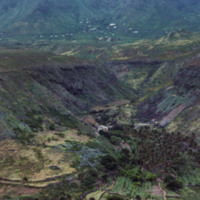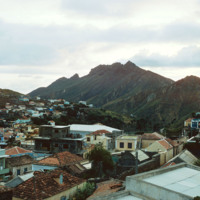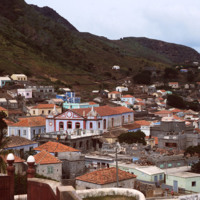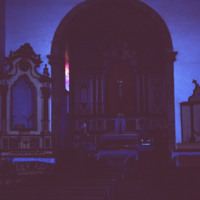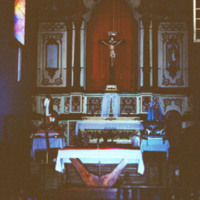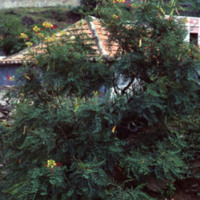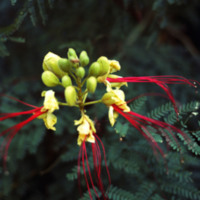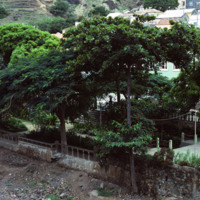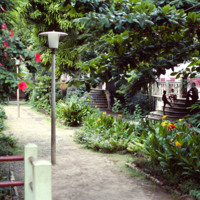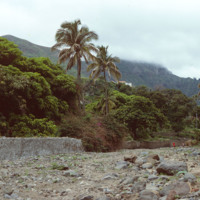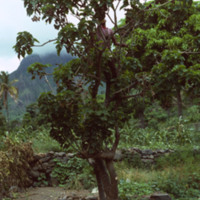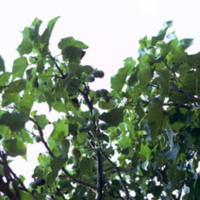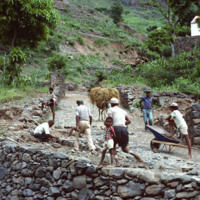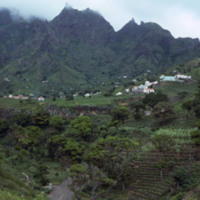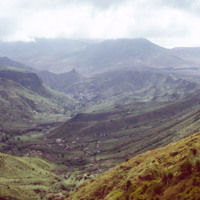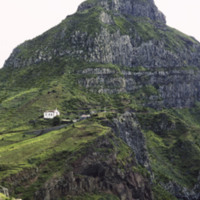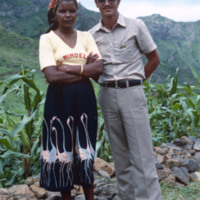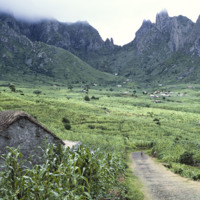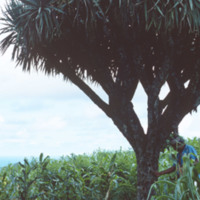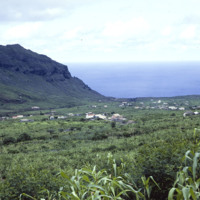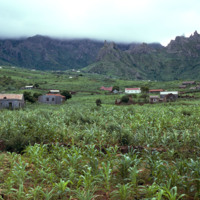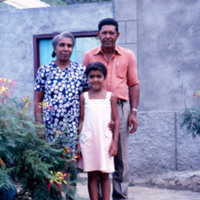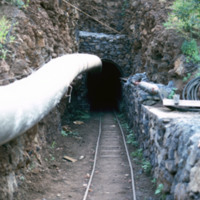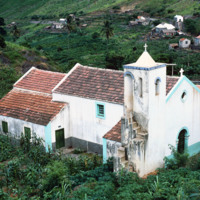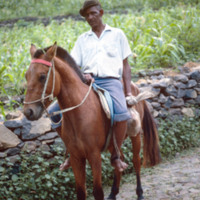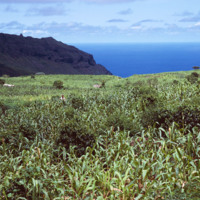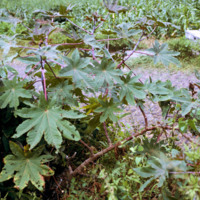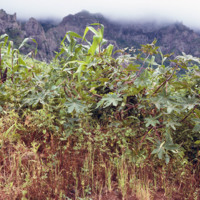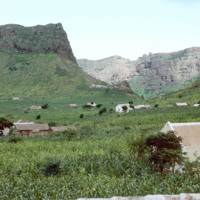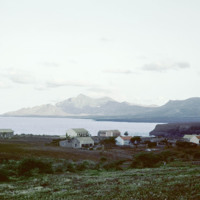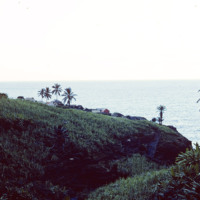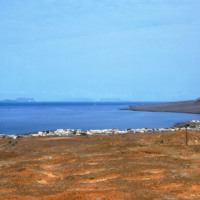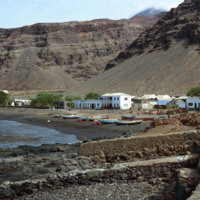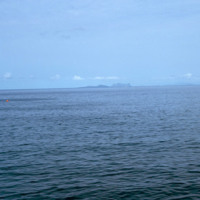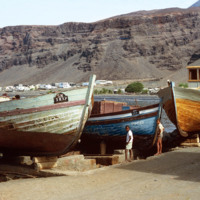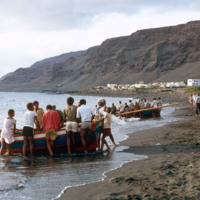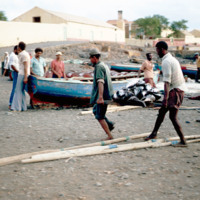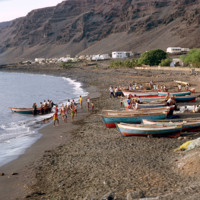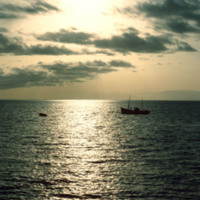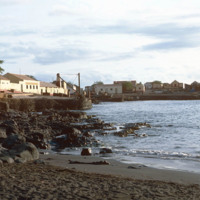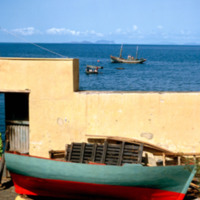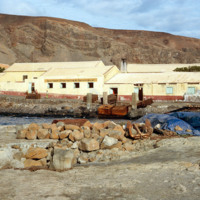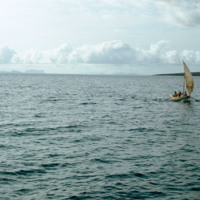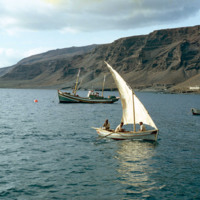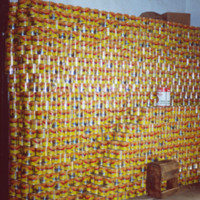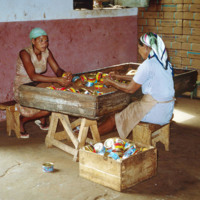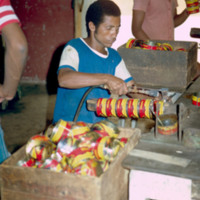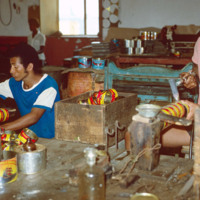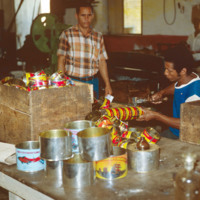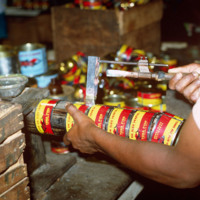Browse Items (1954 total)
Farm Land in Ribeira Brava
Tags: farming, Ribiera Brava, São Nicolau, stone walls
Ribeira Brava
Center of Ribeira Brava
Tags: constructions, restoration, São Nicolau
Ingreja Nossa Senhora do Rosàrio
[Edited to enhance detail.]
Tags: church, interior, religious buildings, São Nicolau
Yellow Bird of Paradise
Tags: São Nicolau, shrub, Yellow Bird of Paradise
Yellow Bird of Paradise [Plant, Close Up]
Tags: São Nicolau, shrub, Yellow Bird of Paradise
Garden on São Nicolau
Tags: Amaryllis, garden, Geranium, São Nicolau
Ribeira Brava: Garden & Path
Tags: garden, horticulture, São Nicolau, street view
Ribeira Brava Landscape
Tags: rocky terrain, São Nicolau, tropical
Jatropha bush
Tags: homeopathy, medicine, São Nicolau
Jatropha Bush [Close Up]
Tags: Ribera Brava / Panja, São Nicolau
Cobblestone Road Construction
São Nicolau: Highlands above Ribeira Brava (1 of 3)
Tags: mountains, Ribera Brava / Panja, São Nicolau
São Nicolau: Highlands above Ribeira Brava (2 of 3)
Tags: mountains, Ribera Brava / Panja, São Nicolau
Portrait of a Middle Aged Man and Woman
Tags: landscape, portrait, Ribera Brava / Panja, São Nicolau
Dragoeiro, the Dragon-tree
São Nicolau Highlands
São Nicolau Highlands
Portrait of Family Outside of a Home
Tags: family, portrait, Ribera Brava / Panja, São Nicolau
Construction of the Fajã Gallery
Parish Church in Ribera Brava
Unidentified Man Riding a Horse
Tags: cobblestone, hinterland, horseback, portrait, Ribera Brava, roads, São Nicolau
Corn Crop Field
Tags: Ribera Brava / Panja, São Nicolau
Castor Oil Plant (1 of 2)
Castor Oil Plant (2 of 2)
São Nicolau Highlands
Tarrafal Bay and Dwellings
Tags: agriculture, bay, coastline, fishing, harbor, landscape, São Nicolau, Tarrafal, Tarrafal Municipality, village
Tarrafal
Tarrafal, Aerial
Tags: aerial, city, coastline, harbor, landscape, rocky terrain, São Nicolau, Tarrafal, Tarrafal Municipality
Shoreline of Tarrafal
Tags: beach, boats, fishing, harbor, São Nicolau, Tarrafal, Tarrafal Municipality, waterfront
Ilhéu Raso and Ilhéu Branco
Boats along the waterfront of Tarrafal Bay
Tags: boats, coastline, fishing, harbor, São Nicolau, Tarrafal, Tarrafal Municipality, waterfront
Boat Launching into Tarrafal Bay
Two Men Hauling Tuna onto Shore
Tags: boats, fishing, São Nicolau, Tarrafal, Tarrafal Municipality, tuna, waterfront
Boats Along Tarrafal Bay
Sunset on Tarrafal Bay
Tags: bay, coastline, fishing, fishing vessels, São Nicolau, shore, sunset, Tarrafal, Tarrafal Municipality
Tarrafal Shoreline with a view of SUCLA
Tags: beach, fishing, harbor, industry, São Nicolau, shore, SUCLA, Tarrafal, Tarrafal Municipality, waterfront
Boat & Tarrafal Bay
SUCLA (Society of Overseas Canning)
Tags: business, fishing, industry, São Nicolau, SUCLA, Tarrafal, Tarrafal Municipality, waterfront
Fishing Vessels on Tarrafal Bay
Tags: bay, boat, fishing vessel, harbor, industry, sail boat, São Nicolau, seascape, Tarrafal
Fishing Vessels on Tarrafal Bay
Tags: bay, fishing, fishing vessel, harbor, industry, sail boat, São Nicolau, Tarrafal, waterfront
Display of Tuna Cans
Tags: cannery, fishing, industry, São Nicolau, SUCLA, Tarrafal, Tarrafal Municipality, tuna
Tuna Canning
Tags: cannery, fishing, industry, São Nicolau, SUCLA, Tarrafal, Tarrafal Municipality, tuna, workers
Shaping and Labeling of Tuna Cans (1 of 4)
Tags: cannery, fishing, industry, São Nicolau, SUCLA, Tarrafal, Tarrafal Municipality, tuna, workers
Shaping and Labeling of Tuna Cans (2 of 4)
Tags: cannery, fishing, industry, São Nicolau, SUCLA, Tarrafal, Tarrafal Municipality, tuna
Shaping and Labeling of Tuna Cans (3 of 4)
Tags: cannery, fishing, industry, São Nicolau, SUCLA, Tarrafal, Tarrafal Municipality, tuna
Shaping and Labeling of Tuna Cans (4 of 4)
Tags: cannery, fishing, industry, São Nicolau, SUCLA, Tarrafal, Tarrafal Municipality, tuna
